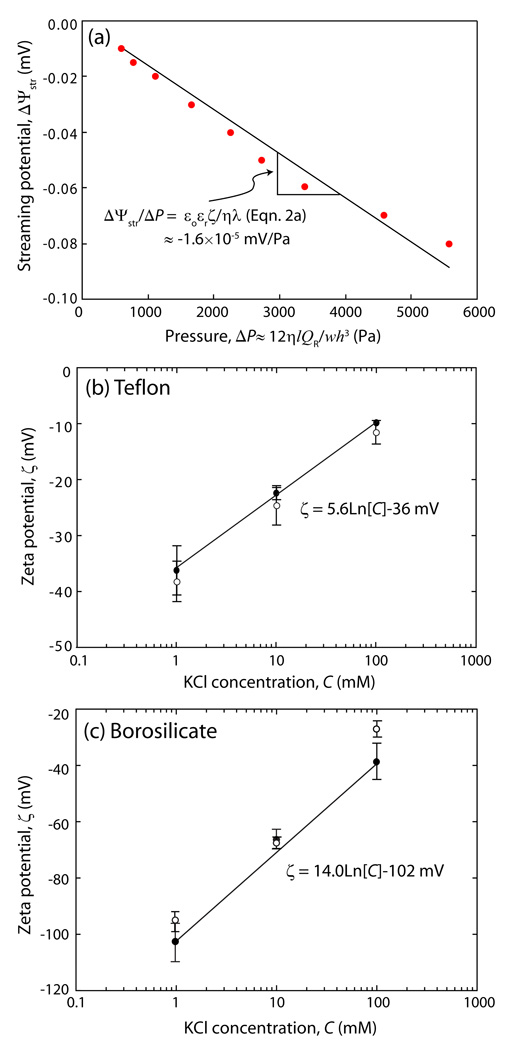Figure 2.
(a) Variations in the measured streaming potential, ΔΨstr, as a function of driving pressure, ΔP, for the capillary channel (see Fig. 1). The errors associated with various aspects of the experiments on ΔΨstr/ ΔP were estimated as ~3 %. The slope, ΔΨstr/ ΔP, shown in Fig. 2(a) was used to obtain the ζ-potential based on the Helmholtz-Smoluchowski equation (Eqn. 2 (a)). Plots of ζ vs. C for a Teflon surface; calculation based on the symmetric capillary channel (Teflon vs Teflon, Eqn. (2a)), and a borosilicate surface based on the asymmetric capillary channel (Teflon vs borosilicate, Eqn. (2b)). The exponential fits are indicated by the solid lines. The open data points are previously reported ζ-potential values for Teflon44 and borosilicate surfaces43 at the same ionic concentrations.

